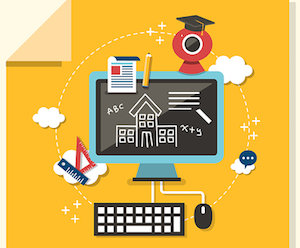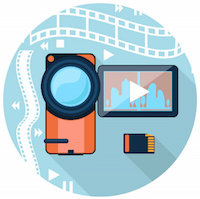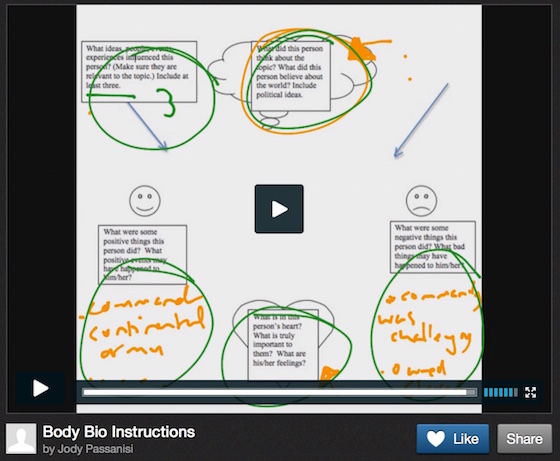My Flipped History Classroom: Year Two
Last school year as I experimented with the flipped classroom for the first time, I was impressed with the way that my students were able to review material at home and follow my pre-recorded process instructions at their own pace.
When I wrote about this experience on MIddleWeb, I said this insertion of moderate flipped classroom methods into my teaching was me “confronting my flipped classroom bias.” That post has been one of the most popular ever here at the Future of History blog.
More than a year has passed since I first tried some flipped classroom techniques. And while I still see some positives, I am a little less starry-eyed and a little more strategic in my implementation. Isn’t that part of the process of teaching? We jump in, try something, revise, re-visit, adjust, try again, reflect, and move forward.
Revisiting the Flip
Since my videos on ShowMe and Educreations last year seemed to be so helpful in bringing content to my students, I was eager to continue the experiment in 2014-15. I still maintain that since I don’t lecture all that much, the flipped model of “watch lecture at home and then discuss at school” isn’t a good fit for me and my inquiry oriented classroom.
Like I had the year prior, I intended to use flipped classroom methods for the beginning of the year procedures and review. My first project was annotation videos. Aaron Brock and I retooled (yet again) our plans for annotating expository text (we wrote about annotation here), and I was excited to create videos for my students about these processes.

When school started, I had a full set of classroom headphones and my videos were uploaded onto our learning management system. I was ready to go.
Jumping in
My students arrived, and we jumped into the usual exciting beginning of the year stuff. Then I got down to the work of having them watch process videos. The first one on note-taking, described in my post last year, was still a big success – the painful day-after-day process of stopping and explaining the intricacies of notes creation was ameliorated by this simple flipped video. I walked around and monitored, answered individual questions, no problem.
Then, for our next class, we were going to read an expository text. I was ready for this! They watched a video. We stopped to discuss. They worked in teams and practiced while watching yet another video. They went home to practice, and there was ANOTHER video available online if they needed support.
Result? They were completely video-ed out. At the beginning of the year, when I want to make the strongest impression about our approach to learning history, I was letting a disembodied version of myself speak more than I was. Even worse, the students weren’t talking enough.
It’s true that I was able to monitor and help more students individually, but it didn’t take away from the weird feeling that I was disconnected.
Then, to top it off, I overheard a couple kids have a conversation about my class: “Well, I don’t know, but maybe she’ll make a video for it!” (laughter).
It was too much video and too soon in the year.
 Reflecting
Reflecting
Obviously, flipped classroom still can work for me (as always on a limited scale I am willing to embrace). The process videos (including a writing checklist, and composing a “body bio” of a historical figure) worked great. And those process videos are ALWAYS available on the LMS for the students to check out any time they need additional help at home. But guess what: they almost never go back to the videos. Instead they ask me, or they ask their peers, so that they can talk through the processes.
I remind them of the videos, some nod politely, but most aren’t going to pursue it. Why?
We’ve always known that learning occurs for many people through conversation, through complex processing that involves interaction. The videos are ultimately passive. Even though they tell students to stop and do something, I will tell you, they are so used to watching things passively that some kids end up just staring at the screen and watching a video through without responding to any of the prompts.
Adjusting

Moving Forward
I’m still tentatively positive about the possibilities of flipped classroom techniques. Just because it didn’t work out as well for me this year doesn’t mean it won’t in the future.
In fact, I still recommend it to others sometimes. When I observe the teachers I mentor, I have suggested it as a way to smooth processes, to provide review or extension, and to help differentiate and allow for more one-on-one time.
I am currently teaching a university class that meets once a week, and because it is just once a week, it has occurred to me multiple times that this may be the best place for some flipped classroom action. Wouldn’t it be great if the students could review video showing ways to create enduring understandings, or see examples of different types of performance assessments in social studies? So maybe flipping is all about context and timing. For certain, teaching is all about trying something, reflecting, adjusting, and then revising.
How do you use flipped classroom procedures in your class? Is it working for you?





































Thank you for this post. While I see some positives in the flipped classroom model, I have similar reservations to using it (I haven’t yet) that you do. I hate jumping on bandwagons (and this seems to be a big one) that go against my whole language principles. Oooh! There! I said that out loud! YES! I can see how some procedural videos could help make things easier in class but, as you say, kids need teacher and student interactions not more videos. My big argument against flipped classroom is about a transmission model of teaching and learning; if I don’t support this model in the classroom why would I subject my students to this at home? And, don’t get me started on homework! I like your idea of having students make the videos. If you end up doing that, I hope you share here.
Thank you so much for your insight. I am at a 1-to-1 school that I’d love to see how a Flipped Class could work for history. Thanks for the insight and how you might do things differently.
I am curious as to how long you have been teaching? I have not done flipped classroom, and actually have little, if any interest in it. My experience has taught me though, that in a high school classroom (over the last 40 years) that doing the same thing over and over has few, if any positive results. All power points (I had a student teacher do that and the kids were falling asleep, as was I) , all notes, all maps, all primary sources and the list goes on and on. Changing things up is critical, and some of the “olden days” methods actually worked and got kids to learn material!
Barbara,
You make an excellent point. I teach middle school and mixing it up is even more important. If it is a practice or activity, it works better if I add a new wrinkle each time we do it.
These are some good insights. Thank you for sharing. I will say after flipping my classroom I initially. I came into some of the same problems that you did. However, I disagree that flipped videos don’t mesh with inquiry based learning. They in fact would be awesome for inquiry based learning. Flipped videos aren’t supposed to be the only source of knowledge when learning. Information given in a flipped video should be short and concise. For an inquiry based class, flipped videos should give a general outline or sketch of information so that students can dive into further detail in class and flesh the information out using different sources. Flipped videos rather give students a starting point to anchor their thoughts and free up valuable class time. I myself try to not assign more than 3 videos in a week which each video being somewhere in the 8 min. range. I also think if you’re worried about students skipping through or passively watching your videos you might want to try a service like EdPuzzle. Also ask yourself is this video engaging? If I was doing the same thing in class in person would my students be any more engaged? Part of the problem too is that if students don’t find something engaging in class they won’t all of a sudden find it engaging at home.
The most worrying aspects of the flipped learning process is that it discourages reading. Students seem to be becoming over reliant on videos and less likely to take on something that requires significant concentration.
Carl, that is outright false. I flipped my class so I could focus on more on close reading.
Agreed. Jason. As a result of flipping my class, I have been able to get my students to read more in class. This year, we read The Things They Carried by Tim O’Brien before interviewing Vietnam veterans about the war. Next year, I will be doing even more reading as I attempt to create a World History through literature program https://docs.google.com/document/d/1fOneooS8BufSwQ6bAb8pgUJRTwzk3gRTYuUt9qd3J2Y/edit. My goal is to get the students to read at least 6 books, alternating between fiction and non-fiction. Couldn’t do it, if it weren’t for the flipped classroom.